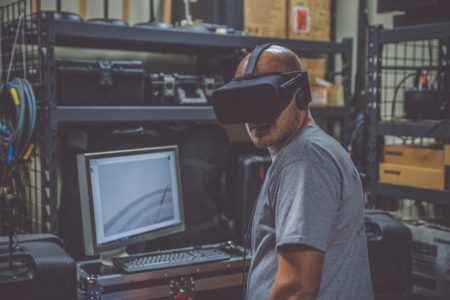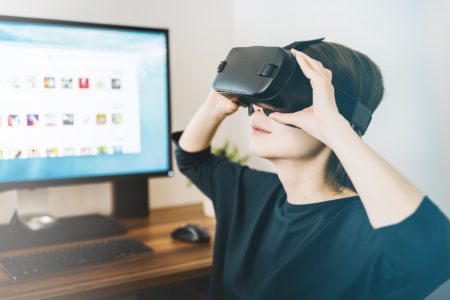January 31, 2020 – Virtual Reality (VR) is a technology that uses computers to create a simulated environment. It has evolved from the video game world into a tool that is being used in more ways and in far more industries than what was originally envisioned by its inventors. Several of its applications are described below.
Shopping
Virtual reality is expected to be the next revolutionary technology to change shopping by offering a more immersive and enjoyable experience for customers, providing them with personalized virtual marketplaces where they see only what they’re interested in. It’s like having a mall designed exclusively for you.
This concept can be extended to shop for a new car or home. Consumers through VR can test out what it would be like driving different car models in exotic locations, helping them to better visualize a specific car driven in destinations straight out of their fantasies. As for buying a new home, real estate agents promoting luxury properties are using VR to sell to clients across the world, allowing them to tour a home and even virtually decorate it.
Fine Dining
Some restaurants have started incorporating VR into their menus. One of the best-known doing this is Sublimotion in Ibiza, Spain, offering a multisensory luxury dining experience. But just how is VR being used? VR gives patrons a different dining “view” that pairs with each course served. You could be dining in a meadow or on a beach, a trippy Dali-esque reality that changes how food is experienced turning it into part of the entertainment and giving new meaning to the words “dinner and a show.”
Hiring and Training
Businesses of all types are now using VR to hire and train employees. Walmart, for example, has recently been testing VR when hiring new managers. This is helping to see if a candidate is a good fit for a position by having him or her experience various scenarios that they will encounter during the course of the job virtually. At Walmart VR is being used to test how well employees know their store and provides training scenarios to improve people and leadership skills, as well as decision-making.
VR can be used to train employees in almost any industry. It can show an employee daily tasks whether in an office, retail job, restaurant, or on a construction site. In healthcare, VR can be used to train doctors and surgeons in difficult-to-replicate tasks, allowing them to gain vital experience that they would be unable to get otherwise.
Gaming
Although VR is being used in a number of incredible ways in a wide range of industries, one of its most popular uses is in the gaming industry. A host of gaming companies are creating immersive experiences with the technology. The new PokerStars game, PokerStars VR, lets gamers play with players from all over the world creating a series of exotic and futuristic virtual locations. Oculus Studio’s Lone Echo is a VR system that provides a whole new level to exploration and adventure gaming immersing players in zero-gravity puzzle-solving experiences. Virtual experiences like this offer gamers something they would find unattainable in the real world. VR gear such as haptic gloves and suits produce a far more immersive experience that goes beyond sight and sound, adding touch. Because of this early success in gaming, VR is expected to become central to the industry from eSports to casino gaming.
Why VR?
When VR first appeared in the video game world, very few would have thought of this technology as anything more than a toy. But now it is going mainstream in many businesses and consumers are buying into the VR experience. When you consider how dynamic the business world is today, and the advent of the gig economy, VR provides the means by which disruptive change can be managed and truly represents a powerful and transformative technology for the 21st century.










